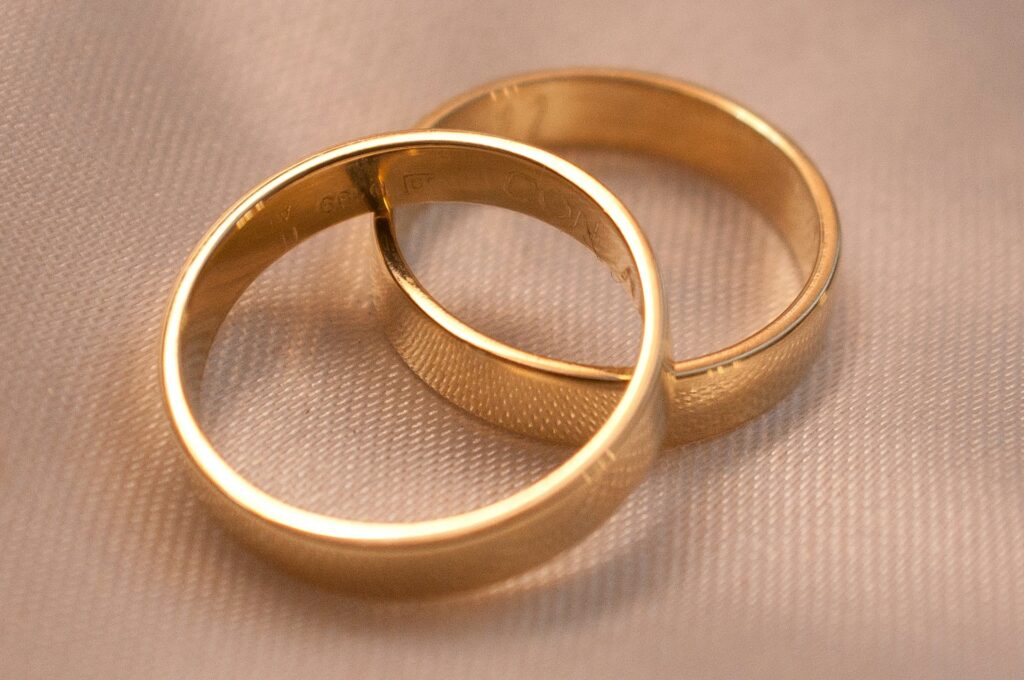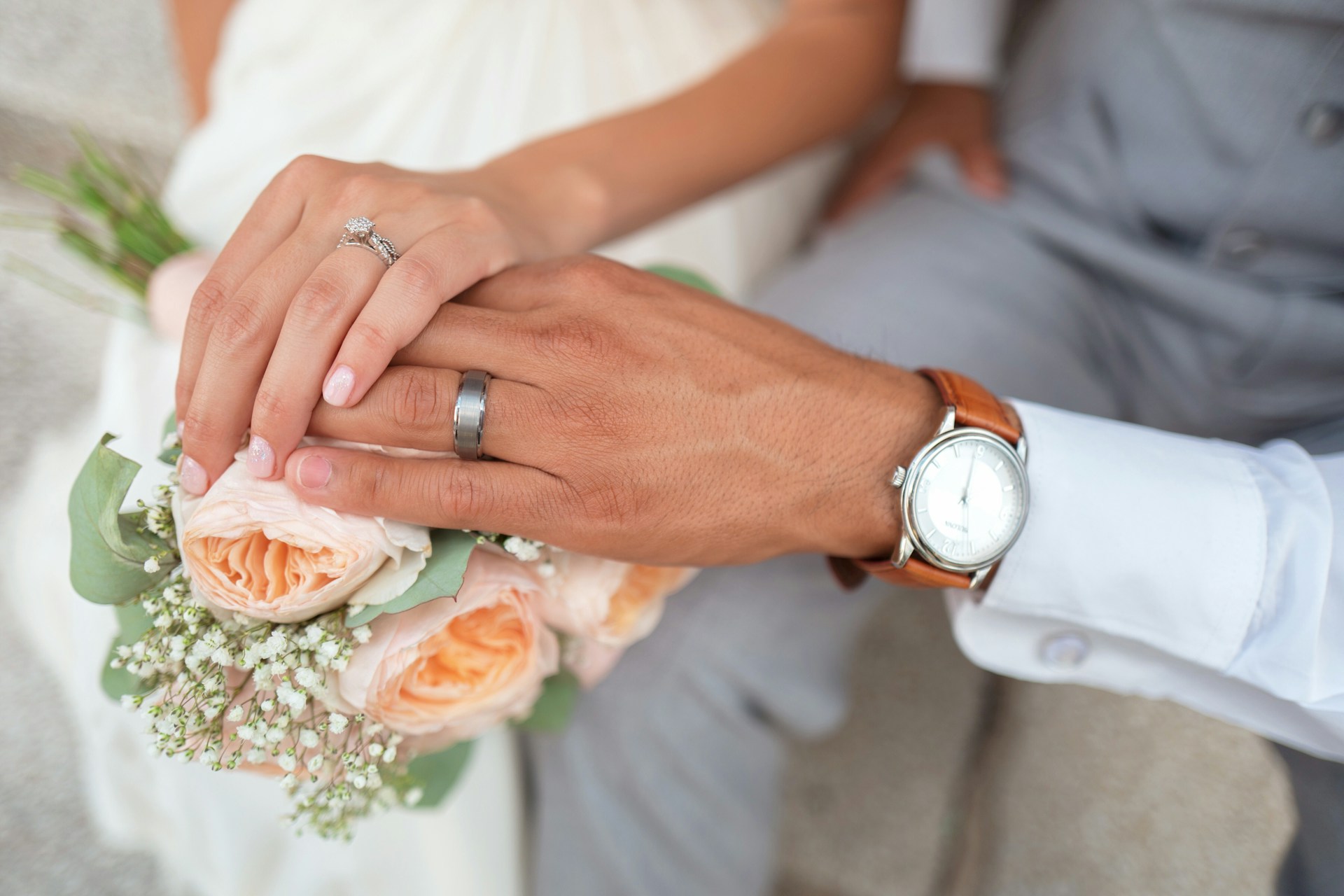Music is a wonderful way to uplift your marriage service and provides a chance for the congregation to play a full part in the ceremony. Careful selection of hymns, songs and music will reflect your hopes for your future together and the promise you are making in the presence of God.
The planning meeting
Meet your music co-ordinator to discuss your ceremony at least three months in advance, usually after you have met your minister so you know what music will be required. Try to meet in the church you are getting married in, so that the musicians can play excerpts of music and you can hear how they will sound.
It is helpful if you already have some ideas of music from weddings of family or friends, but remember that not every piece of music may be playable on the instruments available. For example, some pieces may not be suitable for organ. The church is also likely to have policies against the use of secular music or pop songs, which have unsuitable texts or connotations for a religious service. The music co-ordinator may ask you to play these pieces at the reception instead.
Fees
Check exactly what fees you need to pay. The fee will usually cover playing for your ceremony only and the planning meeting. You may have to pay more if the music co-ordinator attends the walk-through rehearsal with your minister or if the wedding is filmed. If you also have a choir or soloists, they will have a separate charge. It’s worth checking fees at an early stage to avoid any awkward situations later. Musicians may require payment in advance.
Couples sometimes ask a friend to play the organ their wedding; a fee may still be payable to the resident organist as part of their agreement with the church.
If you are bringing in a soloist or other musicians, mention this now as the musicians will want to rehearse with them. Their fees will be separate to those of the church’s own musicians.
You will be expected to pay for any copies of music not in the church’s or choir’s possession; copies of music that is still in copyright are against the law. Please don’t place your musicians in a difficult legal and moral position by asking them to use photocopied music.
Choosing music

There are plenty of options available, especially if you don’t want to have the “usual in and out” music. Seek advice from family or friends to find out what they had at their church wedding. Use wedding CDs or websites to listen to music suggestions, or find clips on YouTube.
Involve the congregation in the singing of hymns or songs during the service. Make sure that you choose familiar hymns: it’s dispiriting if your guests don’t know them and the minister is left to sing alone!
Your minister will advise you on the number of hymns and where in the service they are sung. This might include: at the beginning – after the arrival of the bride, as a psalm/song between the readings, at the signing of the register, during communion (if yours is a communion service), at the dismissal – before the couple leave the church.
Options include: (* Well-known pieces)
- The Lord’s my Shepherd (Psalm 23)*
- Fill your hearts with joy and gladness
- Give me joy in my heart, keep me praising*
- God, in the planning and purpose of life
- God is love, let heaven adore him
- Lord of all hopefulness
- Make me a channel of your peace*
- Morning has broken*
- Jerusalem*
- Love divine, all loves excelling
- Now thank we all our God
- Lead us, heavenly Father, lead us
- O praise ye the Lord
- Praise, my soul, the King of heaven
- The King of Love my shepherd is (Psalm 23)
- A new commandment I give unto you
- Lord, for the years your love has kept and guided
Some hymns can be sung to more than one tune, so ask your organist for advice.
At the arrival of the bride, ‘Here comes the bride’ has been a traditional favourite, but there are plenty of other choices. Trumpet tunes work well. The piece should be fairly short, giving enough time for the bride to process up the aisle, arrive at the altar, and bridesmaids to move to their seats. If in doubt, practice walking up the aisle – very slowly! – while the organist plays a few pieces. If you are planning a more elaborate procession, let the organist know so they can advise on a suitable piece of music.
Options include:
- The Bridal March from Lohengrin, Richard Wagner (“Here comes the bride”)
- Arrival of the Queen of Sheba, George Handel
- Prince of Denmark’s March (“Trumpet Voluntary”), Jeremiah Clarke
- Te Deum Prelude, Marc-Antoine Charpentier
- Trumpet Tune, Henry Purcell
- Trumpet Voluntary, John Stanley
The favourite for the recessional is Mendelssohn’s ‘Wedding March’, but there are plenty of alternatives. The greater the number of guests you have, the longer the music you’ll need – you don’t want to run out of music while the guests are still filing out of the church. Make sure the theme (main tune) of the piece happens within the first 30 seconds; as the newly-married couple, you will be outside the church doors by then and will miss it!
Options include:
- Wedding March from A Midsummer Night’s Dream, Felix Mendelssohn
- Toccata from Symphonie No 5 in F, Charles-Marie Widor
- Nun danket alle Gott (Marche triomphale), Sigfrid Karg-Elert
- Hornpipe from The Water Music, George Handel
- March from Scipio, George Handel
- Finale from Fireworks Music, George Handel
- March, Louis Lefebure-Wely
- Crown Imperial, William Walton
Before the service, the musicians will often choose the music and start playing about 10-15 mins before the planned arrival of the bride. There is usually chatter before her arrival so save a favourite tune for another point when you have people’s attention. The musicians will often continue playing until the bride arrives, but if she is very late, they will stop after a while so their hands don’t get cramp!
At the signing of the registers, there is plenty of opportunity for a special piece to be performed. The congregation won’t be doing anything at this point, so make sure that it captures their attention. Calm, quieter pieces work best, especially if you have a choir or soloist. Signing the registers often takes at least ten minutes, allowing for your photographer to pose and take pictures, so your organist may have extra music on stand-by.
Options for a soloist or choir include:-
- A Gaelic Blessing, John Rutter
- Because the Lord is my shepherd, Christopher Walker
- Faith, hope and love / Ubi caritas, (various composers)
- Love divine, Howard Goodall and others
- O blessed are those who fear the Lord, Paul Inwood (setting of Psalm 128)
- The Lord is my Shepherd, Howard Goodall (or other composers) (Psalm 23)
- God be in my head, John Rutter
- If ye love me, Tallis
- Irish Blessing, Bob Chilcott
- Set me as a seal, William Walton
- The Lord bless you and keep you, John Rutter
- Ave Maria, Franz Schubert or Charles Gounod
- Jesu, joy of man’s desiring, JS Bach
- O for the wings of a dove, Felix Mendelssohn
- Panis angelicus, Cesar Franck
Many of these pieces can also be played as solos. Other choices for organ only include:-
- Gymnopedie I, Erik Satie
- Ave Maria, Franz Schubert or Charles Gounod
- Priere a Notre-Dame from Suite Gothique, Leon Boellmann
- Canon in D, Johann Pachelbel
- Air from Suite No 3 in D, JS Bach (“Air on the G string”)
- To a wild rose, Edward MacDowell
- Various movements from The Water Music, George Handel
Be careful about the words of your hymns, songs or solo pieces. “I watch the Sunrise” and “Pie Jesu” are regularly requested for wedding ceremonies, but the words of these songs are connected with death or funeral services.
Copyright
Copyright exists in musical, poetry and dramatic works for the duration of the author’s life and for seventy years after their death. For instance, works by a composer who died on 31 December 1939 came out of copyright on 1 January 2010.
If you print words of hymns or poems on your order of service that are under copyright, you will need to pay copyright fees and obtain written permission to print the words.
Many churches will already have a copyright licence to cover the printing of songs, but if not you will need to buy a licence specifically for your ceremony. You will need to include the licence number on the back page of your order of service.
Filming your ceremony

Performers have rights in their performances. It is the law that performers may not be recorded without their consent, under any circumstance. The organist may refuse outright to allow the performance to be recorded, or choose to give permission on payment of a fee.
With the arrival of mobile phones with video recording, many weddings are recorded, even if the couple and minister request that video cameras are not used. The minister has the right to control the conduct of the wedding, including use of flash lights and siting of cameras, and may stop their use if they disrupt the ceremony.
Order of Service
Your order of service should include the sequence of events, the words of hymns (or just hymn numbers if a separate hymn book is used), the titles of readings and names of readers, the text of any prayers, especially those needing a spoken congregational response, and the Lord’s Prayer (“Our Father”). It should also include details of any other musical items during the service and the names of musicians taking part.
Circulate this to the minister and musicians for any suggested amendments well in advance of your printing deadline.
Make sure you double-check the words of the hymns; the versions on the internet may be different to the version in the organist’s hymnbook (e.g. Make me a channel of your peace).
On the day
Enjoy the music! All the preparation has been done in advance – so relax and be uplifted by the music during the occasion. You’ll have chosen music that everyone can appreciate and join in with.
This article is the view of the author and does not constitute legal advice or best practice. Always check with your minister and the policies of your church before making any decisions about your wedding ceremony.

